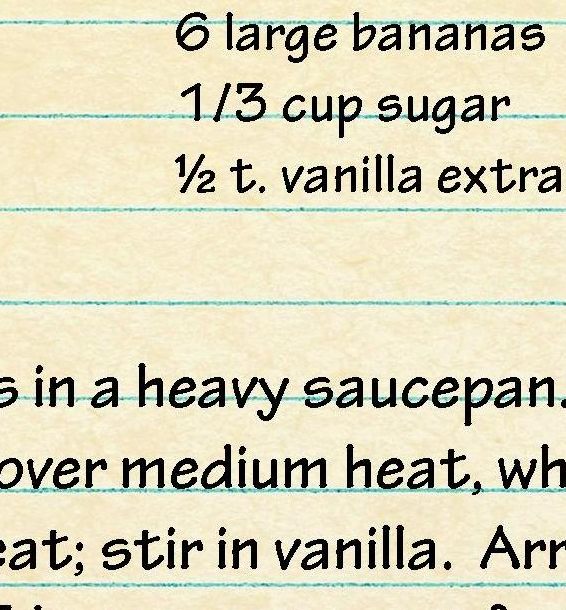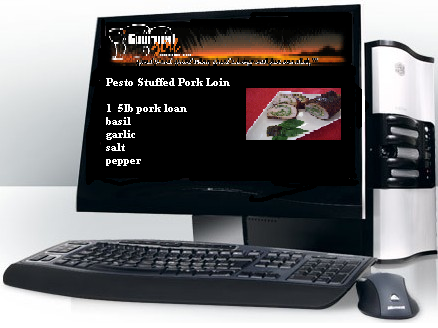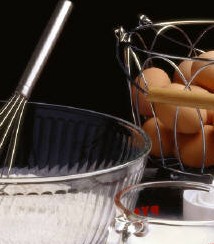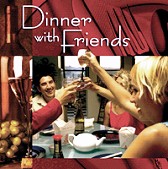The recipe says to do, "what....?"
 By Chef Paw & Elizabeth Mikkelsen
By Chef Paw & Elizabeth Mikkelsen
 Recipes........... Does this word excite you and make your taste buds salivate with anticipation for the promise of a delectable feast created from a list of ingredients? If so, you are probably one of the few who does not view tackling a new or difficult recipe as a daunting task that will surely end in disaster. For others, this is an all too real experience. How can you insure a successful outcome of a special meal your family and friends will all enjoy, instead of a trash can filled with wasted ingredients and an unexpected dinner out on the town. Only learning the proper techniques, and the methods to gain them, can truly gaurantee you success. To that end, we are going to give you some pointers on how to more successfully navigate and decipher a recipe.
Recipes........... Does this word excite you and make your taste buds salivate with anticipation for the promise of a delectable feast created from a list of ingredients? If so, you are probably one of the few who does not view tackling a new or difficult recipe as a daunting task that will surely end in disaster. For others, this is an all too real experience. How can you insure a successful outcome of a special meal your family and friends will all enjoy, instead of a trash can filled with wasted ingredients and an unexpected dinner out on the town. Only learning the proper techniques, and the methods to gain them, can truly gaurantee you success. To that end, we are going to give you some pointers on how to more successfully navigate and decipher a recipe.
Ok, let's get started..........why don't we talk about the verbage used or 'kitchen lingo.' There are many phrases and words typically used only in kitchens, including many colorful metaphors, that you will probably figure out on your own when you tackle your first tough recipe. Let's use that as an example; How do you get started with your first challenging recipe?
Step one is to gather your "mise en place". It is a French phrase defined by the Culinary Institute of America as "everything in place", further; "having everything you need to make the recipe, gathered and ready to go." Your plan of attack. This should include your tools (i.e. measuring spoons, pans, etc.) as well as your ingredients, and perhaps most importantly, your understanding of the steps required in order to complete the recipe. You will inevitably run in to some of these technical kitchen terms we're talking about here, especially when it comes to techniques. By making "mise en place"step one for every recipe you may choose to tackle, you will answer and overcome most of your recipe difficulties before you begin.
 Now, we could sit here and define many of the terms you may run in to, but if you really want to expand your knowledge base, the best approach is for you to do some sleuthing on your own. Start one recipe at a time and find the terms you need to make that particular dish. What is your best partner in this investigative endeavor? Well, you could go out and invest in a kitchen companion book, probably a worthwhile investment for you serious cooks............but for you once a month warriors or novice cooks, we have a better solution....Your computer! This can be your best partner in warding off a culinary disaster. Sites like ours usually cover the basics and give you a good, working knowledge on a variety of subjects, with links to the more clinical sites that cater to the more advanced chef. Sites like these often define unfamiliar terms and offer you solutions for equipment you may not have while also offering tools like converters, which allow you to convert measurements from, or to, metric. (GGM converters can be found on the Sweet Beat and the Recipe pages.)
Now, we could sit here and define many of the terms you may run in to, but if you really want to expand your knowledge base, the best approach is for you to do some sleuthing on your own. Start one recipe at a time and find the terms you need to make that particular dish. What is your best partner in this investigative endeavor? Well, you could go out and invest in a kitchen companion book, probably a worthwhile investment for you serious cooks............but for you once a month warriors or novice cooks, we have a better solution....Your computer! This can be your best partner in warding off a culinary disaster. Sites like ours usually cover the basics and give you a good, working knowledge on a variety of subjects, with links to the more clinical sites that cater to the more advanced chef. Sites like these often define unfamiliar terms and offer you solutions for equipment you may not have while also offering tools like converters, which allow you to convert measurements from, or to, metric. (GGM converters can be found on the Sweet Beat and the Recipe pages.) 
Now, that we have our mise en place in place, how closely do we need to follow the recipe? This is an issue that can be argued from both sides, so we will just offer our humble opinion in what is our specialty: When it comes to baking, it is of paramount importance to follow the recipe to the letter. Why, you ask? Beacause baking is as much a science, as a creative endeavor. You have ingredients that must work in concert with each other, in order to have a desired end result. For instance any recipe where you forget the required leavening, i.e. baking powder or soda, yeast, eggs....(yes, eggs!) will not turn out. With other cooking, you often have a bit of wiggle room for errors or missteps and some amazing dishes have been created by someone inadvertently messing up on a recipe.
Do keep in mind that when this happens, it is usually pure luck. If you stray too far from the original recipe, your end result may be an inedible mess. Does this mean you can never delete a single ingredient? Not at all! If you dislike onions, or can't eat nuts, it is perfectly okay to omit or replace them, as they are optional items that won't effect the integrity of the recipe or method. Optional items are often listed as just that, "optional." But for the intermediate chef, it is not always clear which ingredients would cause a disastrous result if they are excluded, so delete or substitute with caution.
Finally don't be afraid to seek out advice and pointers from seasoned cooks and chefs. Most people are very flattered when people seek out their advice, ask for a cooking tip or even a recipe. We have found some of the best food we have ever eaten has been in the homes of our family and friends. Granted, we chefs, along with the staff at the magazine, do have the advantage of moving in  the circles of many very talented culinarians, who cook professionally, but we are also fortunate to know many phenomenal cooks who consider cooking a great meal merely an enjoyable hobby.
the circles of many very talented culinarians, who cook professionally, but we are also fortunate to know many phenomenal cooks who consider cooking a great meal merely an enjoyable hobby.
So, is it worth the agravation and challenge of tackling an unfamiliar recipe? We say yes! You can produce a great meal in the comfort of your own home, please friends and family with a special treat, all at a fraction of what it costs to eat out. Now were not saying don't eat out, but it can be great fun to get the whole family involved and teach your children some valuable skills, along with the importance of following directions. In many cultures, eating good food is a ritual and a way of passing down the family traditions and flavors of your heritage. So dust off those cookbooks and jump in to your own culinary adventure.
Good luck and good cooking,
Chef Paw & Elizabeth


